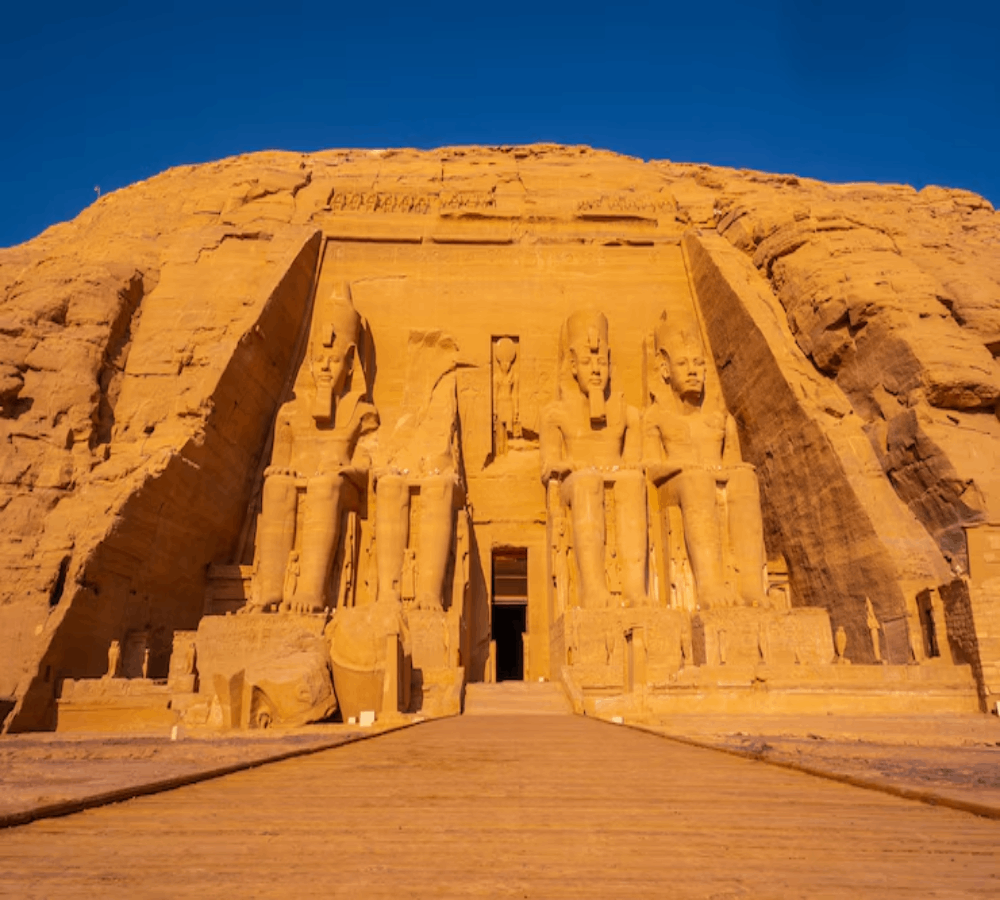New Diamond Tourism Company
New Diamond Tourism Company
New Diamond Tourism Company
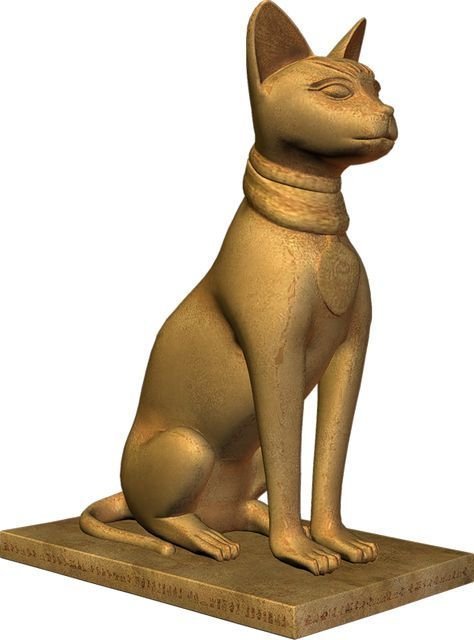
Explore the History of Egypt
Historical tourism in Egypt is one of the most attractive activities for tourists, offering a unique opportunity to explore ancient landmarks and the great civilizations that have shaped the country through the ages. On this page, we will take you on a journey to discover the most significant historical sites worth visiting.
Places to Visit
Abu Simbel Temple0
- Egypt Historical Tourism0
For Booking and Inquiries
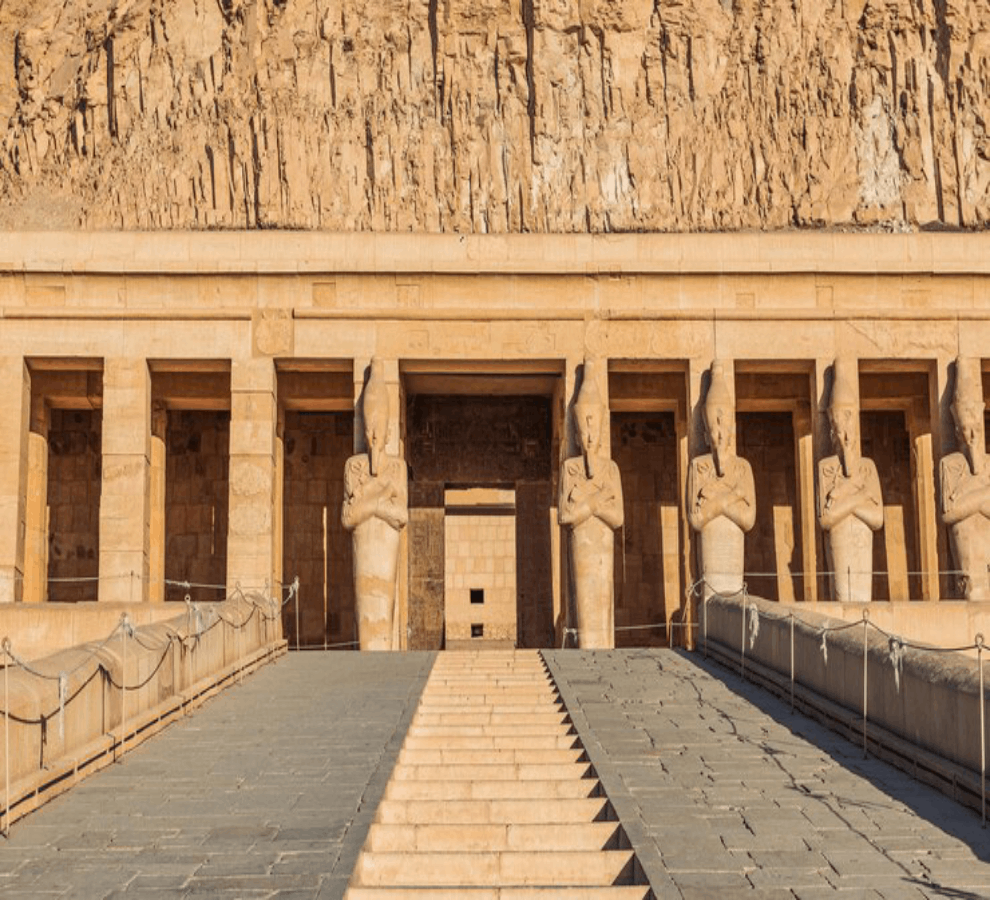
Exploring Abu Simbel Temple: An Artistic Masterpiece that Celebrates the Greatness of the Pharaohs
Abu Simbel Temple is one of the most important archaeological sites in Egypt, located on the shores of Lake Nasser near the Egyptian-Sudanese border. The temple was built during the reign of Pharaoh Ramses II in the 13th century BC and is considered a testament to the greatness of ancient Egyptian civilization and its architectural prowess.
History of Abu Simbel Temple
Construction of the Temple: The great temple was built during the reign of King Ramses II to commemorate his military victories and to honor the god Ra. The temple features colossal statues of Ramses II, standing 20 meters tall, carved into the rock.
The Small Temple: Next to the great temple, there is a temple dedicated to Ramses II’s wife, Queen Nefertari. It contains stunning statues of her and the king.
The Stunning Architecture
The Massive Facade: The temple features a massive facade carved into the mountainside, showcasing four colossal statues of Pharaoh Ramses II that adorn the entrance, adding grandeur and majesty to the temple.
The Interior Design: Inside the temple, you will find spacious halls adorned with carvings and paintings depicting the victories of Ramses II and his famous battles, particularly the Battle of Kadesh. The temple reflects precision and high skill in sculpture and construction.
The Sun Alignment Phenomenon: One of the most remarkable features of Abu Simbel Temple is the phenomenon of the sun aligning with the face of the statue of Ramses II inside the temple twice a year, on his birthday and the day of his coronation.
Temple rescue operation
In the 1960s, when the Aswan High Dam was built, the temple was threatened by sinking under the waters of Lake Nasser. Thanks to an international effort led by UNESCO, the temple was moved to a new location higher than its original location, in a complex process that lasted several years.
The importance of Abu Simbel Temple
A symbol of power and prestige: The temple embodies the military power and prestige enjoyed by Pharaoh Ramesses II. It also reflects the close relationship between the Pharaoh and the gods, which appears in the statues and drawings that decorate the temple.
A prominent tourist destination: Today the temple is one of the most important tourist destinations in Egypt, attracting thousands of visitors annually who come to enjoy its beauty and learn about its ancient history.
How to get to Abu Simbel Temple
Flight: You can reach the temple by flight from Aswan, where there are daily flights departing from Abu Simbel Airport.
Buses and Tours: There are many organized tours available that take you on a road trip to the temple, passing through stunning scenery along the way.
Best time to visit the temple
It is recommended to visit Abu Simbel Temple from October to March, when the weather is mild and suitable to enjoy the visit.
Karnak Temple
- Egypt Historical Tourism0
For Booking and Inquiries
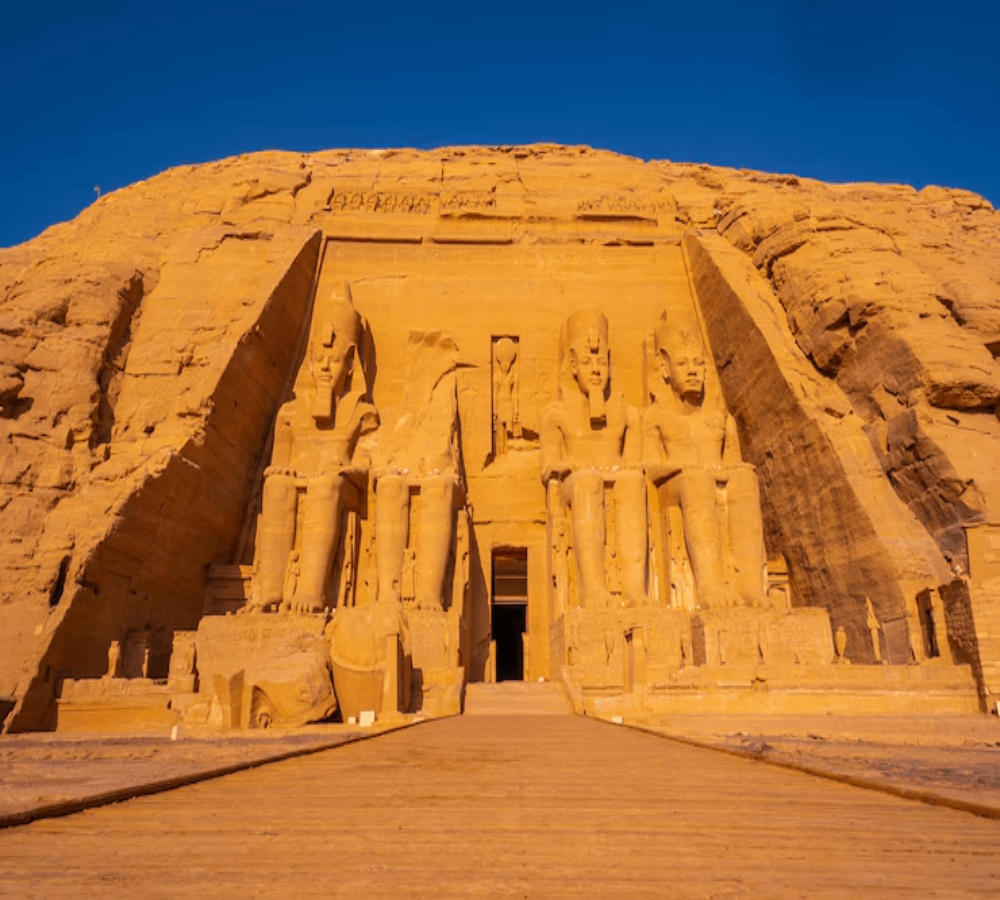
Explore Karnak Temple: Temple of Gods and Kings
Karnak Temple is one of the greatest temples of ancient Egypt and the largest ancient religious site in the world, located in the city of Luxor. The temple includes a huge collection of temples, columns, obelisks and statues, built over a period of 2,000 years, and is considered a symbol of the greatness of Egyptian civilization and the dedication of the Pharaohs to serving the gods.
History of Karnak Temple
Construction of the Temple: Construction of the Karnak Temple began during the reign of King Senusret I in the Twelfth Dynasty, and construction and expansion continued over the following eras until the Ptolemaic rule. The temple was dedicated to the god Amun-Ra, the god of the sun and fertility, and included other sections dedicated to various deities.
The kings who contributed to its construction: A large number of pharaohs contributed to the development and expansion of the temple, including Tuthmosis III, Ramses II, and Hatshepsut, who added wonderful parts that reflect the superiority of Egyptian engineering and art.
For the main sections of the Karnak Temple
For the men section of the Garang drum
The Great Hypostyle Hall: It is considered one of the most prominent features of the temple and the largest hypostyle hall in the world. It contains 134 huge columns with a height of up to 21 meters, decorated with bas-reliefs representing scenes from daily and religious life in ancient Egypt.ctions of the Karnak Temple
Holy Lake: The Holy Lake is located at the back of the temple and was used in religious rituals of purification. It is believed that the priests performed ablution in it before performing the rituals.
Hatshepsut Obelisk: Queen Hatshepsut installed a huge obelisk in the temple that weighs 323 tons. It is one of the tallest ancient obelisks in the world and is considered a symbol of the queen’s devotion to the god Amun-Ra.
Holy of Holies: The Holy of Holies is the most sacred part of the temple, and was designated for offering sacrifices and rituals to the god Amun-Ra.
Karnak as a religious and political destination
A center for the worship of Amun Ra: Karnak Temple was the main center for the worship of the god Amun Ra, as it contained huge statues and inscriptions depicting the victories of the pharaohs and prayers offered to the god. The temple also shows the close relationship between religion and kingship in ancient Egypt.
Royal ceremonies: The temple was used on many official occasions and ceremonies, especially during the Opet Festival, when statues of the gods were transported from Karnak to Luxor Temple across the Nile River in a solemn ceremonial procession.
Excursions to Karnak Temple
Day Tours: Visitors can explore the temple during the day, where they can wander between the huge columns, visit the sacred lake, and learn about the inscriptions and sculptures that tell the history of the temple.
Sound and light show: The sound and light show at Karnak Temple is one of the distinctive experiences that offers visitors the opportunity to learn about the history of the temple through an exciting show using lights and sound in the evening.
The importance of Karnak Temple today
A World Heritage Site: The Karnak Temple has been classified as a World Heritage Site by UNESCO, and today it is considered one of the most important monuments that attracts tourists from all over the world.
A distinguished archaeological site: Karnak Temple remains a witness to the genius of the ancient Egyptians in engineering and architecture, and reflects the extent of the Pharaohs’ interest in honoring the gods and celebrating victory and kingship.
The best time to visit Karnak Temple
It is recommended to visit Karnak Temple during the winter months from October to March, when temperatures are moderate, making the experience more enjoyable. It is also preferable to go early in the morning to avoid crowds.
Pyramids
- Egypt Historical Tourism0
For Booking and Inquiries
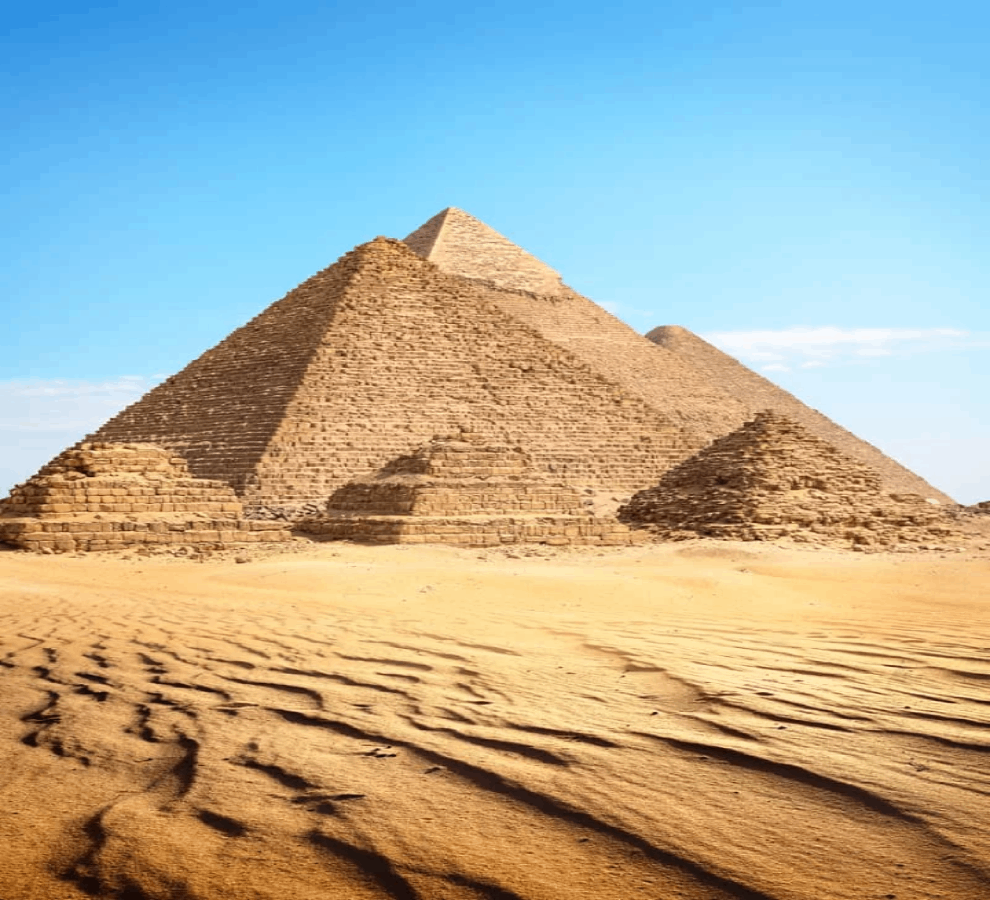
Explore the Pyramids of Giza: a symbol of the ancient Pharaonic civilization
The Pyramids of Giza, located on the Giza Plateau near Cairo, are among the most famous monuments in the world, and one of the Seven Wonders of the Ancient World that still stands today. These pyramids were built during the era of the Pharaohs to be huge royal tombs containing the bodies of the Pharaohs and their possessions, and they are an embodiment of the greatness and engineering creativity that ancient Egyptian civilization achieved.
History of building the pyramids
Pyramids of Khufu (Great Pyramid): Built during the reign of King Khufu (2589-2566 BC), the Great Pyramid is considered the largest pyramid in Egypt and the world, with its original height of 146 meters, and it is considered one of humanity’s greatest achievements in architecture.
Khafre’s Pyramids: Built during the reign of King Khafre (2558-2532 BC) and is considered the second largest pyramid in Giza. It is distinguished by the presence of part of the white stone covering that originally covered the pyramids.
Menkaure Pyramids: It was built during the reign of King Menkaure (2532-2504 BC) and is considered the smallest of the three pyramids, but it is no less grand than the rest of the pyramids in terms of engineering precision and design.
The engineering genius of the Pyramids
Design and structure: The pyramids were built using millions of huge stones, each weighing several tons, and they were transported and placed with amazing precision, as studies indicate the use of innovative techniques in construction to coordinate and polish the stone blocks.
Interior chambers and corridors: The pyramids contain complex burial chambers and secret passages intended to protect the tombs of the pharaohs from thieves. Many royal antiquities and collectibles were discovered inside these rooms.
The pyramids and their symbolism
The Pyramid as a Religious Symbol: The pyramids in ancient Egypt were a symbol of the greatness of the pharaohs and their relationship with the gods. The ancient Egyptians believed that the Pharaohs were the children of the gods, and building the pyramid was part of their journey to the afterlife. Its symbolism
Astronomical design: Some theories indicate that the pyramids were built according to a specific astronomical coordination, where some axes align with the stars, which reflects the superiority of the ancient Egyptians in astronomy.
The importance of the pyramids historically and culturally
A global tourist destination: The Giza Pyramids are considered one of the most prominent tourist destinations in Egypt and the world, attracting millions of visitors every year who come to discover the grandeur of these historical monuments.
The pyramids are evidence of Egyptian genius: The construction of the pyramids bears witness to the genius of the ancient Egyptians in engineering and mathematics, as these monuments represent a challenge to contemporary minds in how they were built with such precision and mastery.
The most important activities in visiting the pyramids
1. Exploring the pyramids from the inside: Visitors can enter some of the pyramids to explore secret rooms and passages.
2. Camel or horse tour: One of the best ways to explore the Giza Plateau is by camel or horse ride, where you can enjoy an enchanting tour around the pyramids and enjoy the panoramic views.
3. Visit the Sphinx: A visit to the pyramids is not complete without seeing the Sphinx, the silent guardian that combines the body of a lion with the head of a pharaoh.
The best time to visit the pyramids
It is best to visit the pyramids in the fall or spring when temperatures are moderate, giving you an enjoyable and relaxing experience. Early morning is the perfect time to avoid crowds and enjoy a quiet atmosphere.
Hatshepsut Temple
- Egypt Historical Tourism0
For Booking and Inquiries
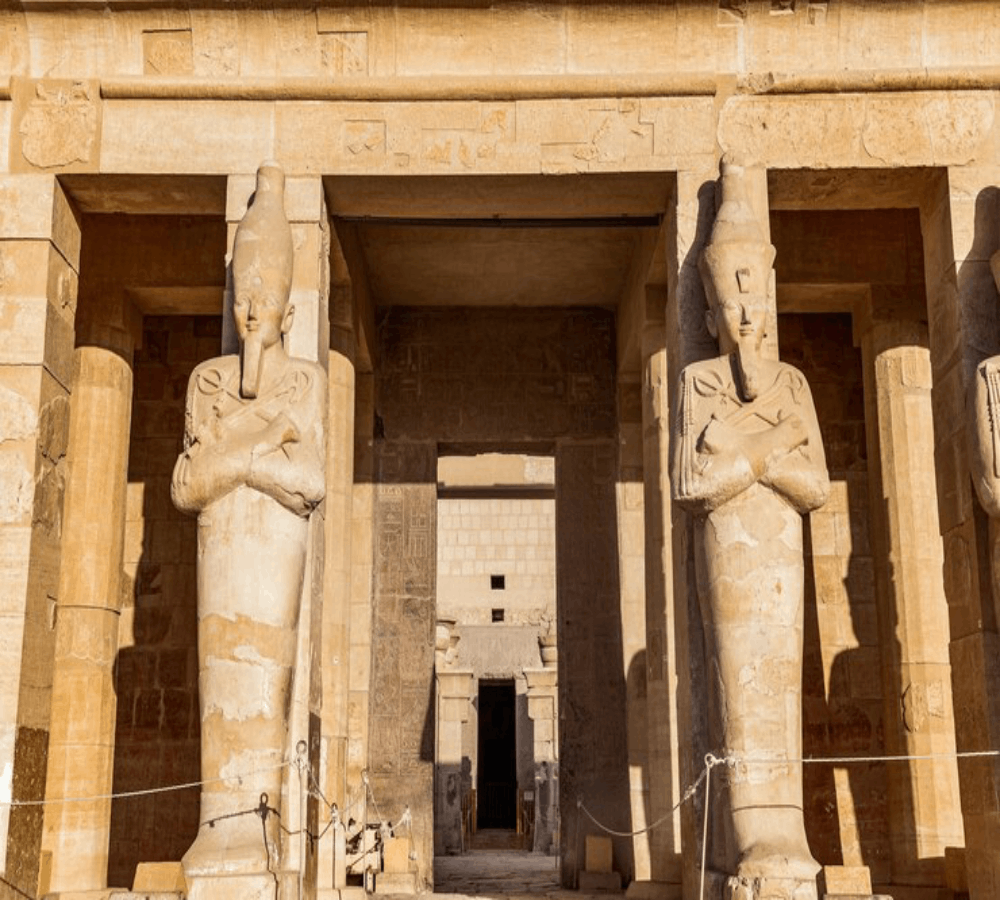
Explore the Temple of Hatshepsut: an architectural and historical marvel in the Valley of the Kings
The Temple of Queen Hatshepsut, also known as the “Temple of Deir el-Bahri,” is one of the most magnificent funerary temples in ancient Egypt. Located on the west bank of the Nile near Luxor, the temple was built in memory of Queen Hatshepsut, one of the most powerful women who ruled Egypt during the 18th Dynasty.
History of the Temple of Hatshepsut
Queen Hatshepsut: She ruled Egypt as pharaoh between 1479 and 1458 BC, and succeeded in consolidating her power and control through massive building projects such as this temple. Hatshepsut was one of the most successful rulers in the history of ancient Egypt.
Building the temple: The temple was built in the Valley of the Kings to be a funerary temple for her, as she wanted to immortalize her memory through huge architecture that highlights her relationship with the god Amun Ra and embodies her greatness as a pharaoh.
Architecture of Hatshepsut Temple
Innovative design: The Temple of Hatshepsut is considered one of the greatest architectural masterpieces in the history of ancient Egypt, as the temple was carved into the foot of the mountain, making it amazingly harmonious with the surrounding natural environment.
The Three Terraces: The temple consists of three rising terraces connected by wide stairs, and includes huge columns and intricate carvings that tell stories from the queen’s life and achievements.
Columns and inscriptions: The temple is decorated with many columns that reflect the elegance of ancient Egyptian architecture. The inscriptions on the walls of the temple also narrate the Queen’s trips to the Land of Punt and embody her relationship with the gods.
Symbolism and religious history
The queen’s reverence for the god Amun Ra: The temple shows Hatshepsut in the image of the worshiping queen who dedicated her life to the worship of the god Amun Ra. The temple includes many parts dedicated to his worship.
Funerary character: The temple was built as a funerary temple, with interior sections dedicated to housing the statue of Hatshepsut and her spirit after her death.
Rediscovery of the temple
Over the years, the Temple of Hatshepsut has undergone many restoration works after being partially damaged. Many of the modifications added by later kings were removed, which contributed to restoring its original beauty.
The importance of the Temple of Hatshepsut
Unique architectural heritage: The temple represents the pinnacle of architectural art in ancient Egypt, as it combines harmony with the environment and unique aesthetic design.
Evidence of the Queen’s power: The temple embodies the power that Hatshepsut enjoyed as a ruling woman in ancient Egypt, and her role in expanding the empire and achieving economic stability.
How to get to the Temple of Hatshepsut
Location: The temple is located on the west bank of the Nile River in Luxor, and can be easily reached as part of a tour that includes the landmarks of Luxor and the Valley of the Kings.
Tours: There are many tours available that include visiting the Temple of Hatshepsut in addition to other sites in the Valley of the Kings such as Karnak Temple and Luxor Temple.
Best time to visit the temple
It is best to visit the Temple of Hatshepsut early in the morning or during the months from October to April, when the weather is suitable for enjoying a relaxing tour among the ancient temples.
Philae Temple
- Egypt Historical Tourism0
For Booking and Inquiries

Exploring the Temple of Philae: an enchanting experience on the banks of the Nile
The Temple of Philae is one of the most prominent monuments in Egypt, offering you the opportunity to escape into a world of mythology and architectural beauty. Located in the heart of the Nile River, the island is an ideal destination for history and culture lovers. Thanks to its exquisite design and unique engravings, you will have an unforgettable tourist experience.
The importance of the Philae Temple
Worship of the Goddess Isis: The Temple of Philae was built in honor of the goddess Isis, making it a sacred place for many visitors seeking to visit ancient religious monuments.
Architectural masterpiece: The temple is considered a wonderful example of ancient Egyptian architecture, as it includes massive columns and intricate carvings that tell the stories of the goddess and the myths associated with her.
Things to do in Philae Temple
Visit the Temple: Enjoy a tour of the temple to explore its magnificent architectural details and wall reliefs that tell the stories of the goddess Isis.
Cruise: You can reach the temple via a wonderful cruise on the Nile River, which adds a magical touch to your experience.
Taking photos: Make sure to take souvenir photos in various places around the temple, as it provides you with stunning natural views of the Nile.
—
What you can expect when you visit Philae Temple
Rich cultural experience: Enjoy a tour of the history of ancient Egyptian civilization through inscriptions and myths associated with the goddess Isis.
Relaxation and tranquility: The island surrounding the temple provides a peaceful atmosphere, enabling you to relax and enjoy the beauty of nature.
Learn about the history: Get information from the tour guides about the history of the temple and the historical events associated with it.
—
The best times to visit Philae Temple
Spring and Autumn: Spring and autumn (March to May and September to November) are the best times to visit Philae Temple, as temperatures are moderate and the weather is pleasant.
Temple of Ramesses II
- Egypt Historical Tourism0
For Booking and Inquiries
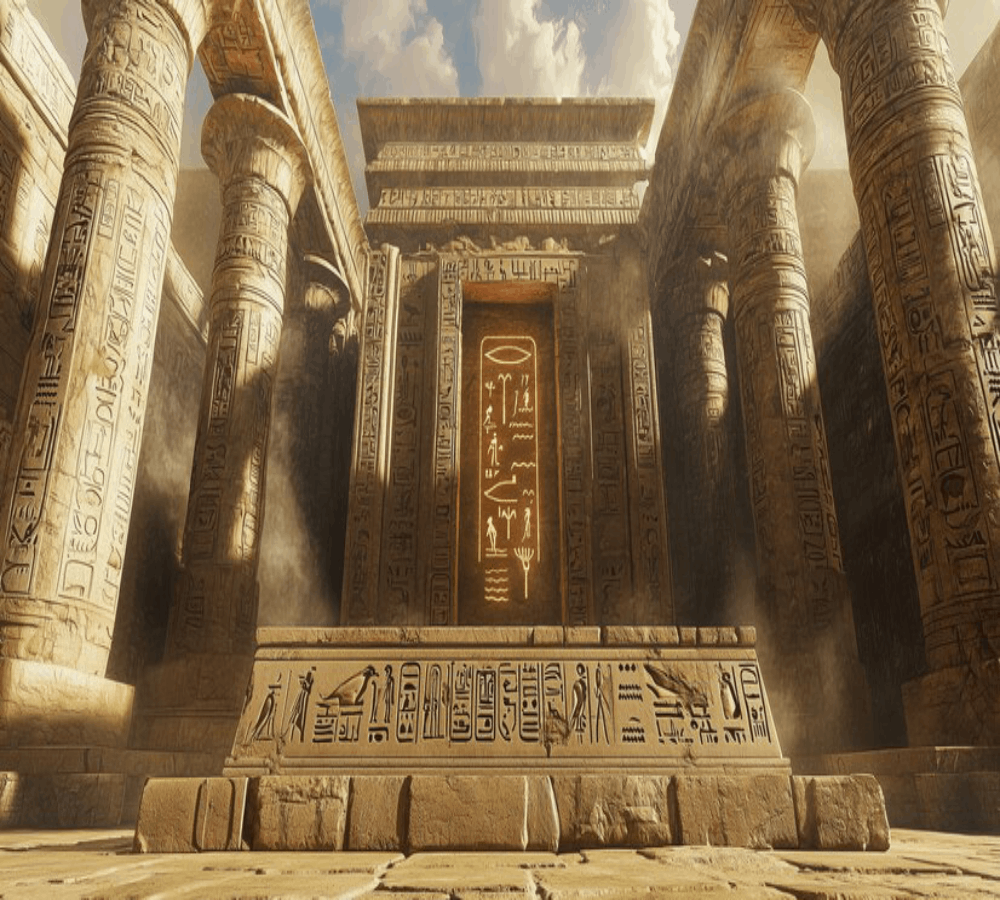
Exploring the Temple of Ramesses II: A Journey into Past Greatness
The Temple of Ramesses II, also known as the Temple of Abydos, is one of the greatest temples of ancient Egypt. It is distinguished by its magnificent architectural design and unique carvings that embody the power and greatness of King Ramses II. The temple is located in the Abydos area, which is considered an important religious center during the era of the Pharaohs.
The importance of the Temple of Ramesses II
Worship of the god Osiris: The temple was built in honor of the god Osiris, making it a sacred place for many visitors seeking to connect with Pharaonic mythology.
Architectural masterpiece: The temple is considered a wonderful example of ancient Egyptian architecture, as it includes huge columns and intricate wall reliefs that tell the stories of King Ramesses II and his achievements.
—
Things to do in the Temple of Ramesses II
Visit the Temple: Enjoy a tour of the temple to explore its magnificent architectural details and wall reliefs that tell the stories of the king and historical events.
Touring the archaeological area: You can explore the landmarks surrounding the temple, such as tombs and other temples in the Abydos area
Taking photos: Make sure to take souvenir photos in various places around the temple, as it provides you with stunning natural scenery.
What to expect when visiting the Temple of Ramesses II
A rich historical experience: Enjoy a tour of the history of the Pharaonic civilization through the inscriptions and legends associated with King Ramesses II.
Peace and tranquility: The temple’s location provides a peaceful atmosphere, enabling you to relax and enjoy the beauty of the ancient architecture.
Learn about the history: Get information from the tour guides about the history of the temple and the historical events associated with it.
The best times to visit the Temple of Ramesses II
Winter and Spring: Winter and spring (November to March) are the best times to visit the Temple of Ramses II, as temperatures are moderate, making walking around the area more comfortable.
Temple of death
- Egypt Historical Tourism0
For Booking and Inquiries

Exploring the Temple of Mut: A spiritual experience in the heart of Egyptian civilization
The Temple of Mut is considered one of the important temples in ancient Egypt, and is located in the city of Luxor. The temple was built in honor of the goddess Mut, the goddess of protector and love, and is considered one of the most prominent monuments that reflect the greatness of the Pharaohs and their religious traditions. The temple is distinguished by its magnificent architectural design and unique decorations that reflect the spirit of ancient Egyptian civilization.
The importance of the Temple of Mut
Worship of the Goddess Mut: The temple was built to honor the goddess Mut, who was considered one of the main deities in ancient Egyptian religion, and a symbol of protection and fertility.
Exceptional Architecture: The temple is considered a distinctive example of ancient Egyptian architecture, as it contains huge columns and wall reliefs showing scenes from Egyptian mythology.
—
Things to do in Temple of Mut
Visit the Temple: Enjoy a tour of the temple to explore its unique architectural details and wall reliefs that tell the stories of the goddess Mut.
Walking around the surrounding area: You can explore other nearby monuments, such as the Karnak Temple, which is considered one of the largest temples in the world.
Taking photos: Make sure to take photos in various places around the temple, as the site offers you wonderful natural scenery
—
What to expect when visiting Mut Temple
Rich cultural experience: Enjoy a historical tour that introduces you to ancient Egyptian religion and the mythology of the goddess Mut.
Tranquility and relaxation: The location of the temple provides a peaceful atmosphere, enabling you to relax and contemplate the beauty of the ancient architecture.
Learn about the history: Get useful information from the tour guides about the history of the temple and the events associated with it.
—
Best times to visit Mut Temple
Winter and Spring: The winter and spring months (November to March) are the best times to visit Mut Temple, as temperatures are moderate and suitable for exploring.
Serapeum Temple
- Egypt Historical Tourism0
For Booking and Inquiries
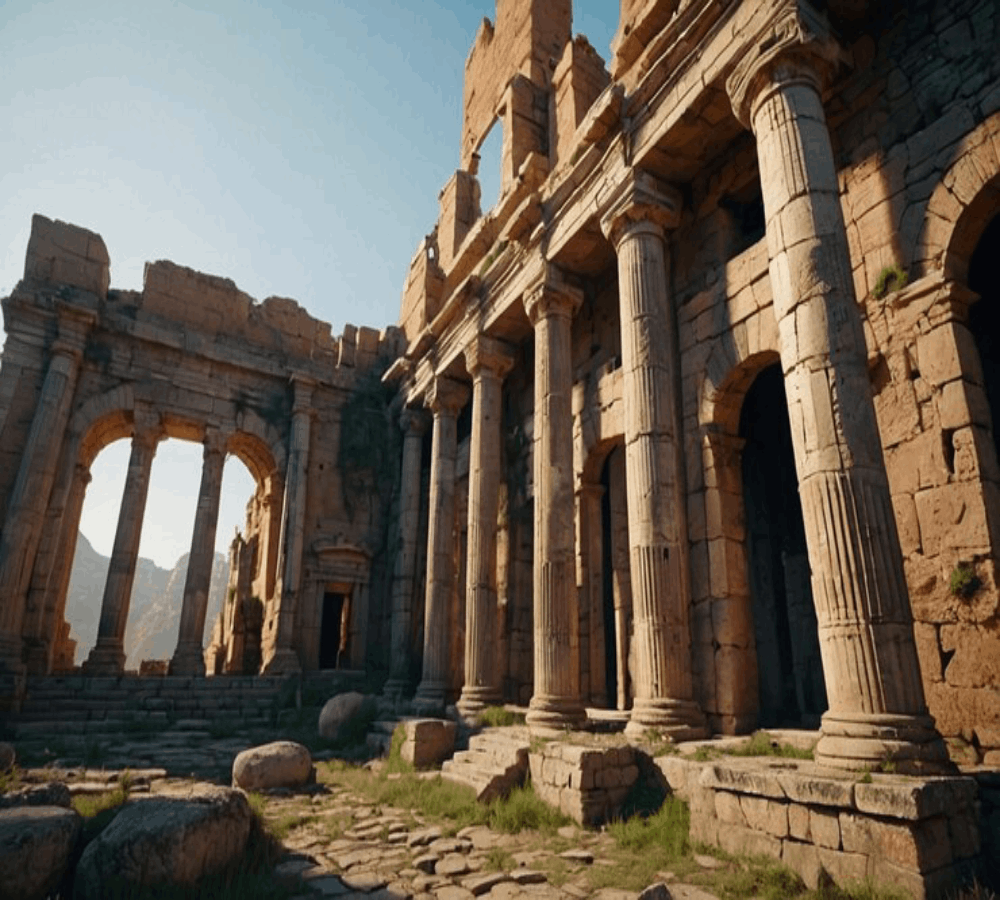
Exploring the Serapeum Temple: An amazing experience into the ancient civilization of Egypt
The Serapeum Temple is considered one of the most prominent temples in ancient Egypt, and is located near the city of Saqqara. The temple was built in honor of the god Serapis, who was considered an important deity in ancient Egyptian religion, and combines the characteristics of the gods Osiris and Isis. The temple is one of the unique monuments that reflects the greatness of the Pharaohs and their religious traditions.
The importance of the Serapeum Temple
Worship of the god Serapis: The temple was built as a sanctuary for the god Serapis, who was considered a symbol of life and death, which makes it an important place of worship.
Architectural masterpiece: The temple is distinguished by its unique architectural design, as it contains huge halls and ornate columns, in addition to underground crypts that contain statues of the god.
—
Things to do in Serapeum Temple
Visit the Temple: Enjoy a tour of the temple to explore its magnificent architectural details and inscriptions showing the stories of the god Serapis.
Touring the archaeological site: You can explore the areas surrounding the temple, including other ancient tombs in Saqqara.
Taking photos: Make sure to take souvenir photos in various places around the temple, as the historical view offers you a special aesthetic.
—
What you can expect when you visit Serapeum Temple
Rich historical experience: Immerse yourself in the history of ancient Egyptian civilization by visiting the Serapeum Temple and learning about the myths associated with the god Serapis.
Tranquility and serenity: The temple’s location provides a peaceful atmosphere, giving you the opportunity to enjoy moments of contemplation and relaxation.
Learn about the history: You can get useful information from the tour guides about the history of the temple and the events associated with it.
—
The best times to visit Serapeum Temple
Winter and Spring: The winter and spring months (November to March) are the best times to visit Serapeum Temple, as temperatures are moderate making walking around the area more comfortable.

